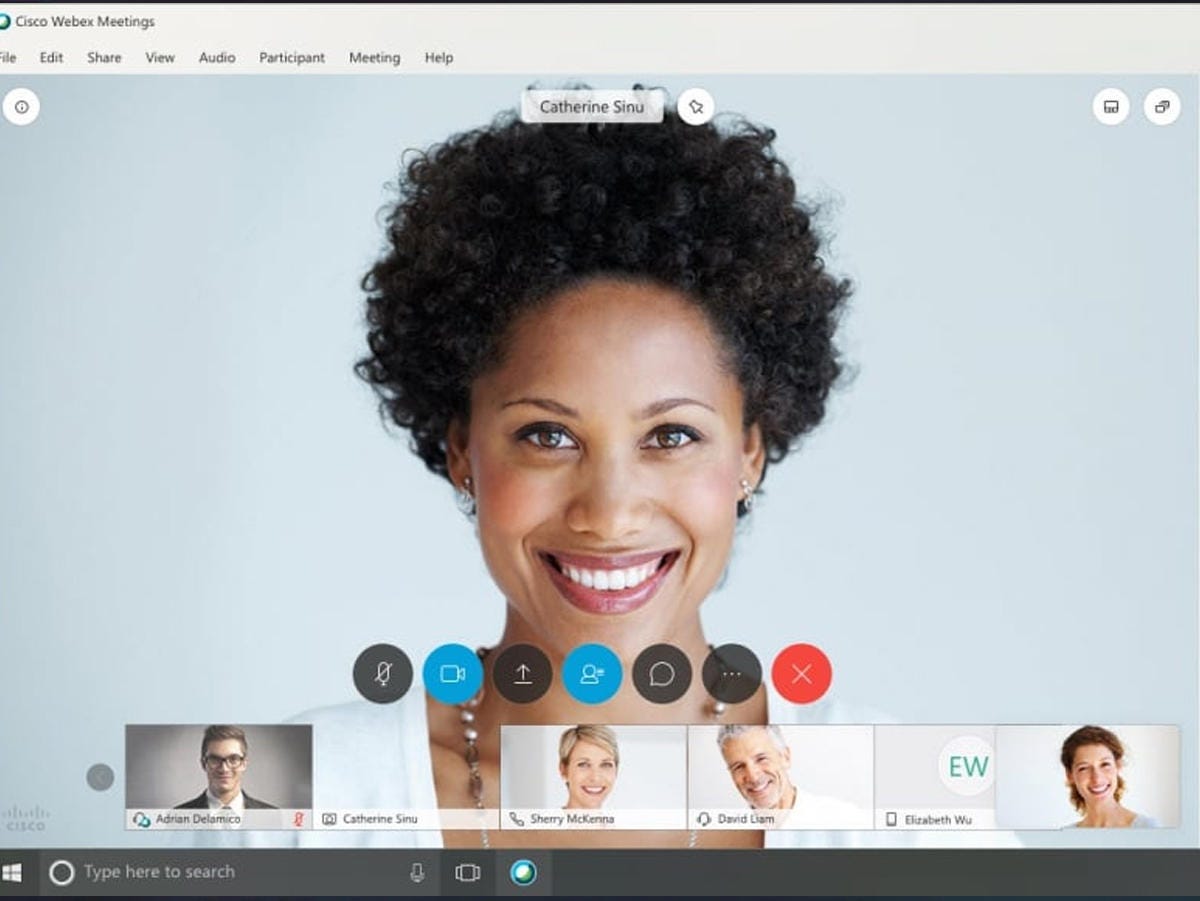A few years ago, video meetings were still rare for most people, something you did once a month, maybe, if you worked in an office for a big enough company. These events were infrequent enough that everyone struggled to remember how to make everything work. And then a global pandemic abruptly sent us all home early from work and school, and online meetings and classes quickly replaced in-person events. Now that video conferencing services have left their niche and became part of mainstream life, we’ve all become experienced online meeting participants.
Even as the world gradually reopens for face-to-face business meetings and kids go back to the classroom, video conferencing tools have proven their worth. That’s especially true for freelancers, small businesses, and informal work alliances. If you’re in that category, you don’t have a corporate budget to pay monthly per-user fees for a service that everyone in the company can use, nor do you have full-time support staff to deploy and manage the service. Smaller businesses and sole proprietors need video conferencing tools that just work, preferably for free.
That’s the purpose of this list, which focuses on services that allow people to collaborate for work or school projects, although there’s no reason you can’t use them for hanging out with friends online and hosting virtual cocktail parties. Online meetings can include collaborative features like screen sharing or whiteboarding and can typically be recorded for posterity. The most important qualification to make this list is that the service must be completely free, with no trial editions, expiration dates, or hidden costs. Typically, that involves technical limits on what you can do with the service: a cap on the number of people that can join a meeting, for example, or a time limit for each meeting. If you can stay within those lines, you can get a lot of work done for free.
The biggest, best-known brand in video conferencing
In the category of “tech company names that have become generic terms,” Zoom is right up there with Xerox and Google, no doubt much to the consternation of the company’s trademark lawyers. But Zoom’s share of mind towers over its competitors, and for good reason: Its user base has grown exponentially since the start of the pandemic in early 2020.
Zoom’s basic plan (“Free, forever. No credit cards required.”) allows unlimited one-on-one meetings but limits group sessions to 40 minutes and 100 participants. You can record a meeting, but it’s stored locally. Support is through the online Help Center only. By contrast, paid plans can schedule marathon sessions that last up to 30 hours and offer cloud storage that any team member can access anytime.
The biggest advantage of Zoom is its ubiquity. Everyone knows how to use it, thanks to a year of pandemic-mandated meetings can classes. If you can live without the bells and whistles in the paid plans, and if the 40-minute hard stop for every meeting isn’t an issue, then Zoom away.
If you use Office, you’ll feel right at home
Microsoft’s older video calling tool, Skype, is still around. Your family might even use it to keep in touch with the grandparents when they call from their iPad every weekend. For collaboration, though, Teams is the preferred alternative. Businesses with Microsoft 365 subscriptions get the full Teams feature set as part of their paid plan, and accredited academic institutions and nonprofit organizations can get no-cost, full-featured plans as well.
For everyone else, there’s a free Teams option. Anyone can sign up for the free version of Microsoft Teams using a personal email address; that tier supports up to 300 meeting participants, with meetings that can last for up to 24 hours. (Microsoft has extended both limits from the normal 100 participants and 60 minutes during the COVID-19 pandemic.) Other standard features include guest access, one-on-one and group video and audio calls, shared files (2GB per user and 10GB per team), screen sharing, and document collaboration using online versions of Word, Excel, PowerPoint, and OneNote.
Screen sharing and virtual whiteboard features are key
Webex, which was founded in 1995 and acquired by Cisco in 2007, is upfront about its Basic plan: “Our free plan has limited access to certain features, but it’s a great way for you to try before you buy.” Despite that disclaimer, frugal Webex users can accomplish a fair amount, with customizable meeting layout options, screen sharing on desktop and mobile devices, whiteboarding, and the ability to save recordings locally. Meetings can have up to 100 participants, with meeting times capped at 50 minutes. Support for the free plan is online only.
You’ll need to upgrade to the Meet plan ($15 per user per month) to increase the number of participants to 200 and extend maximum meeting times to 24 hours. Other premium features include cloud recording and streaming from Facebook Live.
Enterprise infrastructure, priced for a sole proprietor
Lifesize has made its mark building solutions for enterprise communications and call centers, but if you look closely, you can find free plans aimed at sole proprietors and very small businesses. As with most of its competitors, free meetings come with limits on time and the number of participants. In this case, the limits are fairly stingy: 40 minutes per meeting, with a maximum of 10 online attendees. But as part of the deal you get the same infrastructure that global enterprises use, with video and screen sharing resolution at full HD (1080p).
Meeting participants can join using native web apps in Google Chrome or Microsoft Edge. Downloadable apps are also available for Windows, MacOS, iOS, and Android.
Best for those who want to host very large meetings
Wait, isn’t this the company that has been around since 2000 doing free conference calls and making a gazillion dollars a year by collecting a tiny piece of the interconnect fees when you use your phone on its network? Yep, that’s the one. Not surprisingly, their video conferencing service is also free.
On its landing page, FreeConferenceCall aggressively compares its feature set to those offered by a free Zoom Basic plan. You’re allowed to have more participants (1000 per meeting, instead of Zoom’s 100) with no time limits on meetings; in addition, you get user reports (a perk reserved for paid subscribers in Zoom’s universe) and 1 GB of cloud space for recording meetings. You can pay for small upgrades, like more cloud storage space, but for most people a free account will cover all the bases.
FreeConferenceCall has apps for Windows, MacOS, Linux, iOS, and Android.
The Canadian alternative
Despite the extremely similar names, there’s no connection between this Toronto-based company and FreeConferenceCall. Parent company Iotum is in the API business, with a platform that supports voice and video calls, live streaming, and real-time messaging. It all uses the same infrastructure as the audio conference call service and includes the full set of features you expect from better-known alternatives, including screen sharing, whiteboarding, and full moderator controls. Paid upgrades allow international dial-in numbers, custom hold music, and recording capabilities.
You can use FreeConference.com with downloadable desktop apps for Windows, MacOS, and Linux, as well as mobile apps on iOS and Android, or set up a meeting using any modern browser. Chrome apps and an Outlook add-in for PC are also available.
Will free video conferencing software work for webinars and online events?
Our focus in this article is on small meetings, formal and informal, between people collaborating on projects. One person usually plays host, with participants able to chime in when necessary. Webinars and presentations are a decidedly different event. Instead of participants, you have audience members, who typically can’t speak and don’t have a video feed.
All of the services in this list can be pressed into service for large events, subject to participant limits. But for larger online events aimed at a public audience, Facebook Live and YouTube Live are more popular choices.
Which video conferencing options are worth paying for?
The biggest benefit of a paid video conferencing plan is the removal of meeting time limits. For a small team of remote workers, it’s not that big a deal for everyone to join a new meeting after the first 40 or 50 minutes runs out. But for larger meetings, especially those involving clients or customers, that forced end marks you as a cheapskate.
Other worthy upgrades include administrative tools that allow a host to designate another participant to run a meeting, as well as cloud recording and transcribing capabilities so that attendees (and those who couldn’t make the live event) can review the event after the fact.
What are the limitations of Zoom’s free video conferencing plan?
The limitations on Zoom’s free Basic plan apply to anyone hosting a meeting. The number of participants is capped at 100, and group meetings end automatically after 40 minutes. In addition, a host can only have one meeting in process at a time, whereas paying subscribers can purchase multiple licenses to allow multiple meetings.
Other limitations worth noting: You can’t dial in to a Zoom meeting set up by a free plan subscriber, and there are no options for polling, transcribing, or assigning a co-host.
How we narrowed the field
We looked at currently available video conference services that support a wide range of desktop and mobile platforms, concentrating on those with a well-established reputation and a reliable infrastructure for hosting high-quality, reliable meetings. We didn’t do any testing ourselves.
The most important factor, as we note in the title, is that the service must be completely free for long-term use, with no expiration date or hidden costs. That filter knocks some well-known names off the list, including Intermedia AnyMeeting, GoToMeeting, and Google Hangouts Meet. Every program in our list offers some feature limitations available only with paid upgrades, but individuals and small businesses that can work with those limitations can use these services for free, for as long as they want.
How to choose
Every video conferencing service offers a core set of features that are pretty much the same. Meeting participants can connect using audio and video hardware on a PC or mobile device. The ability to share a screen with other participants is universal. Some, but not all, of these services also allow document sharing, collaborative editing, and virtual whiteboarding.
The biggest differentiating factor is, of course, the number of meeting participants and the time limit for online meetings. If you regularly host short meetings with small teams (under 10 people), any of these services will do. For larger groups, be sure to examine the limits carefully. Another differentiating factor is recording capabilities, with most free plans allowing local recordings only and reserving cloud storage space for paid subscribers.
Because these services are free, there’s no barrier to trying them out before you settle on one that matches your needs and expectations. If your trial isn’t satisfactory, move on to the next contender.




























